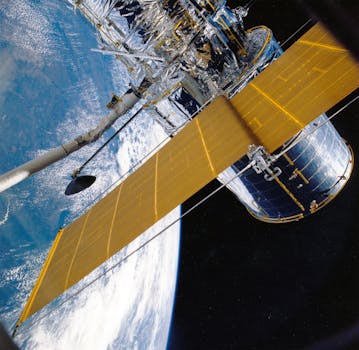Satellite Telecommunications 2023: What’s New and What’s Next? – Focus on Satellite Telecommunications

Satellite Telecommunications 2023: What’s New and What’s Next? Focus on Satellite Telecommunications
The satellite telecommunications industry has experienced significant advancements in recent years, with new technologies and innovations emerging to meet the growing demand for global connectivity. As we move into 2023, it’s essential to examine the current state of the industry and explore what’s on the horizon. Focus on Satellite Telecommunications has become a crucial aspect of the telecommunications sector, enabling seamless communication and data transfer across the globe.
Satellite telecommunications play a vital role in connecting remote and underserved communities, providing critical communication services, and supporting various industries such as aviation, maritime, and emergency response. The increasing demand for satellite telecommunications has driven innovation, with advancements in areas like satellite design, launch technology, and ground infrastructure.
One of the significant developments in satellite telecommunications is the rise of Low Earth Orbit (LEO) constellations. Companies like SpaceX, OneWeb, and Amazon’s Kuiper Systems are launching thousands of small satellites into LEO to provide global internet connectivity. These constellations offer faster speeds, lower latency, and greater capacity than traditional Geostationary Orbit (GEO) satellites.
Advancements in Satellite Technology
Recent years have seen significant advancements in satellite technology, including the development of more efficient propulsion systems, advanced materials, and improved solar panels. These advancements have enabled the creation of smaller, more powerful satellites that can operate for longer periods. Additionally, the use of 3D printing and other manufacturing techniques has reduced production costs and increased the speed of satellite development.
The introduction of phased array antennas and other advanced technologies has also improved the performance and capabilities of satellites. These antennas allow for more precise beamforming and greater flexibility in terms of frequency and polarization. Furthermore, the integration of artificial intelligence (AI) and machine learning (ML) algorithms is enhancing satellite operations, enabling real-time monitoring and optimization of satellite performance.
Emerging Trends and Applications
The satellite telecommunications industry is experiencing a significant shift towards the adoption of hybrid networks, which combine satellite and terrestrial connectivity. This approach enables the creation of more resilient and flexible networks, capable of providing seamless communication services in a wide range of environments. Hybrid networks are particularly useful for applications like disaster response, where traditional communication infrastructure may be compromised.
The growing demand for satellite-based Earth observation services is another emerging trend. Satellites are being used to collect data on weather patterns, climate change, and natural resources, supporting applications like agriculture, forestry, and urban planning. The use of satellite-based sensors and IoT devices is also becoming more prevalent, enabling real-time monitoring and tracking of assets and environments.
Challenges and Future Directions
Despite the many advancements in satellite telecommunications, the industry still faces significant challenges. One of the primary concerns is the growing problem of space debris, which poses a risk to operational satellites and the environment. The development of sustainable and responsible space practices is essential to mitigate this issue.
Another challenge is the need for greater standardization and interoperability across the satellite telecommunications industry. The lack of common standards and protocols hinders the integration of different systems and networks, limiting the potential for innovation and collaboration. Efforts to establish open architectures and common interfaces are underway, but more work is needed to achieve true interoperability.
As the satellite telecommunications industry continues to evolve, it’s likely that we’ll see the emergence of new technologies and applications. The integration of satellite communications with other technologies like 5G, IoT, and AI will create new opportunities for innovation and growth. Furthermore, the development of reusable launch vehicles and other sustainable space technologies will help reduce the environmental impact of satellite launches and operations.




